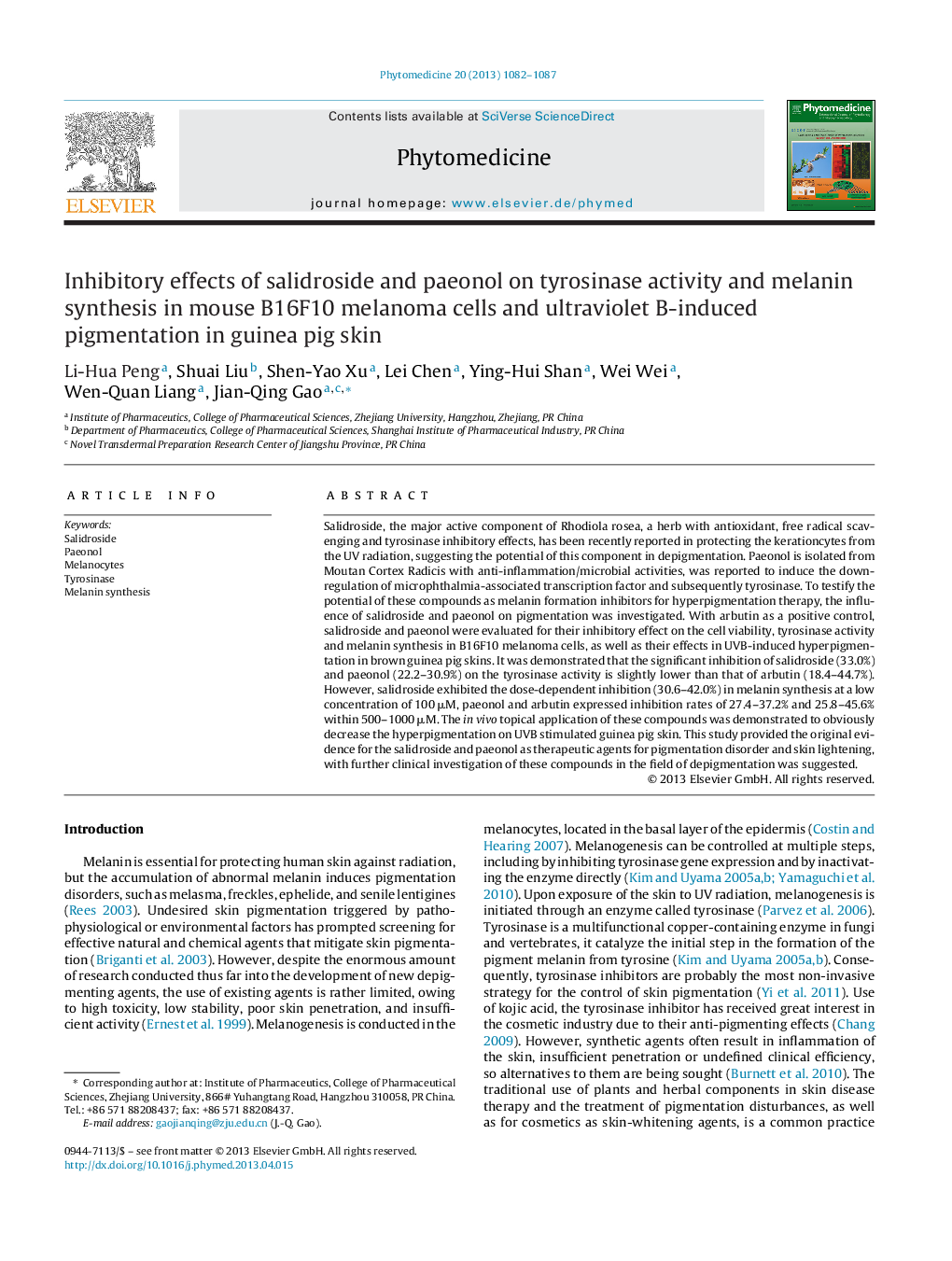| Article ID | Journal | Published Year | Pages | File Type |
|---|---|---|---|---|
| 2496673 | Phytomedicine | 2013 | 6 Pages |
Salidroside, the major active component of Rhodiola rosea, a herb with antioxidant, free radical scavenging and tyrosinase inhibitory effects, has been recently reported in protecting the kerationcytes from the UV radiation, suggesting the potential of this component in depigmentation. Paeonol is isolated from Moutan Cortex Radicis with anti-inflammation/microbial activities, was reported to induce the down-regulation of microphthalmia-associated transcription factor and subsequently tyrosinase. To testify the potential of these compounds as melanin formation inhibitors for hyperpigmentation therapy, the influence of salidroside and paeonol on pigmentation was investigated. With arbutin as a positive control, salidroside and paeonol were evaluated for their inhibitory effect on the cell viability, tyrosinase activity and melanin synthesis in B16F10 melanoma cells, as well as their effects in UVB-induced hyperpigmentation in brown guinea pig skins. It was demonstrated that the significant inhibition of salidroside (33.0%) and paeonol (22.2–30.9%) on the tyrosinase activity is slightly lower than that of arbutin (18.4–44.7%). However, salidroside exhibited the dose-dependent inhibition (30.6–42.0%) in melanin synthesis at a low concentration of 100 μM, paeonol and arbutin expressed inhibition rates of 27.4–37.2% and 25.8–45.6% within 500–1000 μM. The in vivo topical application of these compounds was demonstrated to obviously decrease the hyperpigmentation on UVB stimulated guinea pig skin. This study provided the original evidence for the salidroside and paeonol as therapeutic agents for pigmentation disorder and skin lightening, with further clinical investigation of these compounds in the field of depigmentation was suggested.
Graphical abstractFigure optionsDownload full-size imageDownload high-quality image (215 K)Download as PowerPoint slide
